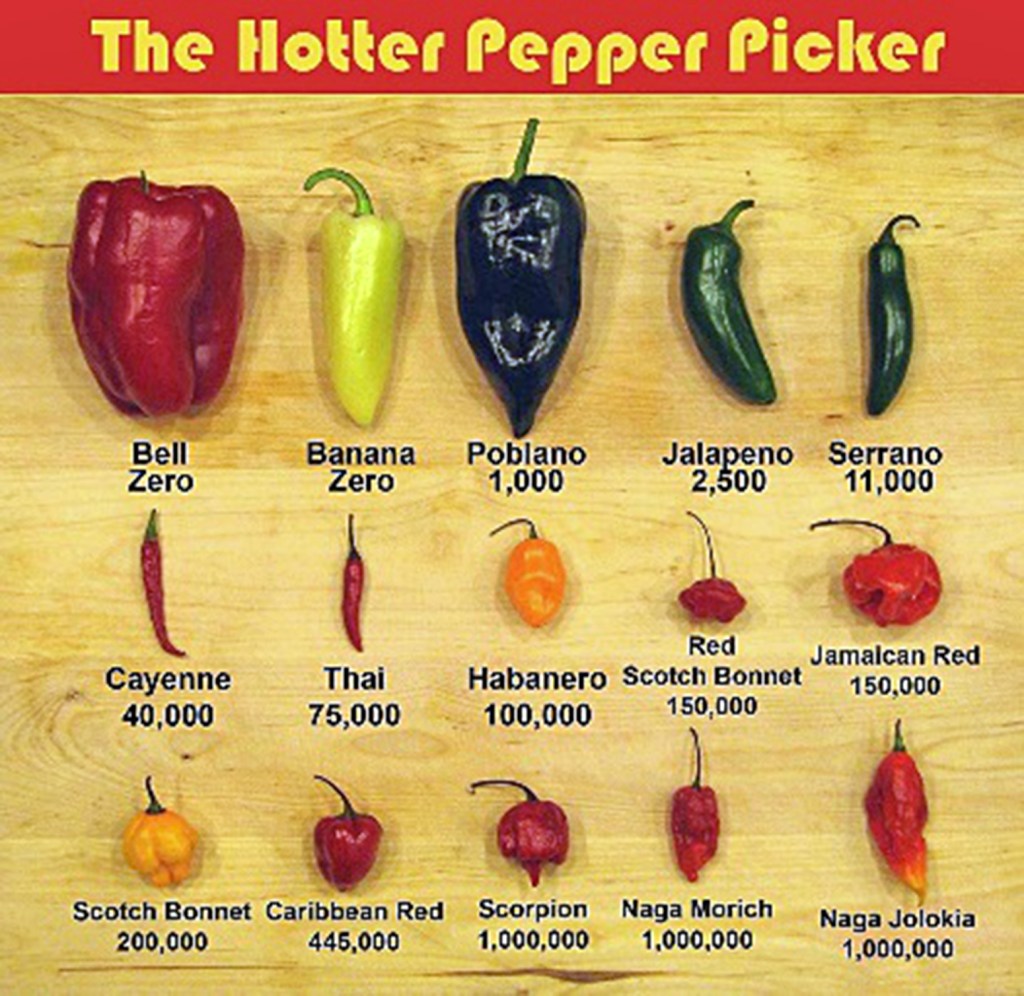ONE GARDENER TO ANOTHER: Pick a peck of peppers
Published 6:45 am Monday, February 26, 2018

- Pepper heat chart
The genus Capsicum, also known as peppers, are produced in a large variety of colors, shapes and heat levels.
Common terminology breaks them down on a most basic level into two categories – sweet and spicy.
The Scoville Scale, developed by William Scoville in 1912, measures the hotness of a pepper. The degree of hotness is given in Scoville Heat Units (SHU). It ranges from 0 (sweet bell peppers) to 16,000,000 (pure capsaicin). Capsaicin is the compound produced by peppers that create the burning sensation.
I’m a spicy gal, but I have my limits. I am always in awe when I see one of those competitions where the contestants pop habanero after habanero in their mouths for two minutes straight. I feel like even if you win, there is a very distinct downside to the victory.
However, there is a place in my pantry and my garden for habaneros and bell pepper alike. Although these peppers vary greatly visually and by taste, they all require the same growing conditions. Peppers prefer full sun (6 to 8 hours) and moist, loamy soil. Loam is a generally fertile and well-drained soil, containing clay, sand and a significant amount of decomposed organic matter (compost).
Many gardeners prefer growing their own transplants, compared to purchasing plants at the local nursery or garden center. Transplanting simply refers to starting seeds in containers and then transplanting them outdoors when the conditions are right. Pepper seeds should be started indoors 8 to 10 weeks before the last frost. Here in the Tennessee Valley, that is predictably between April 1 and 15, so now is the time to start the seeds indoors.
Transplants can be safely moved to the garden when the soil temperature is at a consistent 70 degrees. Before moving from indoors to the garden, seedlings need to be acclimated for at least a one week prior to planting, which is referred to as hardening off the transplants. After conditioning, leave plants out overnight for one night to completely harden off the plant before placing it in the garden.
Peppers prefer a soil pH of 6.0 to 6.5. They can be fertilized at first fruit set and again as bottom foliage begins to turn yellow. Take care not to over fertilize. This can cause the plant to produce excessive foliage but will reduce fruit production.
Peppers and their Scoville Heat Units (SHU)
• Mild (0 SHU – 2000 SHU): Bell, Banana, Anaheim, Poblano, Ancho;
• Medium (2500 SHU – 23,000 SHU): Jalapeno, Hot Wax, Serrano;
• Hot (30,000 SHU – 325,000 SHU): Cayenne, Thai, Habanero, Scotch Bonnet;
• Flaming (440,000 SHU – 1,000,000 SHU): Caribbean Red, Scorpion, Naga Morich, Naga Jolokia
This recipe is a wonderful combination of various peppers for the salsa lover. Until next week, happy gardening.
Roasted 5-Pepper Salsa
Ingredients
• 10–12 ripe Roma tomatoes, quartered
• 1 large onion, quartered
• 1 bulb garlic
• 2 red bell peppers, quartered and seeds removed
• 3 large Anaheim peppers, quartered and seeds removed
• 5 jalapenos, quartered and seeds removed
• 2 large poblano peppers, quartered and seeds removed
• 3 hot red chili peppers, halved and seeds removed
• 1 bunch cilantro
• 1 limes, juiced
• 2 teaspoons cumin
• 1 teaspoon salt
• 1 teaspoon black pepper
• Olive oil
Directions
Heat oven to 325 degrees.
Place tomatoes, onion and garlic in a bowl, coat with olive oil and transfer to a baking sheet.
Add all peppers to the bowl, coat with olive oil and transfer to a second baking sheet.
Bake for 60 to 75 minutes until peppers’ skins are charred.
Allow vegetable to cool slightly.
Transfer all vegetables to a food processor and pulse a few times, leaving vegetables chunky.
Add cilantro, lime juice, cumin, salt and pepper.
Pulse until desired consistency is reached.
This recipe is a blueprint for roasted salsa. As with many recipes, you can adjust the peppers according to your taste. If the salsa proves to be too spicy for your palate, additional tomatoes and onions can be added. Make sure to add additional lime juice and seasonings as well. This recipe also works well fresh, without roasting.
— Irland, a member of the Limestone County Master Gardeners, can be reached at kippirland@hotmail.com. For more information on the Limestone County Master Gardeners, visit http://mg.aces.edu/limestone.



